How to Bypass Screen Time Restrictions in 2025: 6 Ways Kids Bypass iOS Parental Controls
Apple screen time is super handy for limiting what your child can do on their device, but what if they know how to hack screen time? They might have found a way to bypass the restrictions even after downtime kicks in. This guide will show you how to stop them.
Restricting your child’s iOS device is easy with Apple screen time, from limiting the content they can access to capping their total screen time per day. It not only prevents your child from being exposed to explicit content, but also helps them be mindful of how much time they’re spending on their device.
What if your child has worked out how to hack screen time restrictions, though?
Unfortunately, there are a few ways children can bypass the restrictions you set. In this guide, we’ll set out the different tricks your child might use to hack screen time settings, and how you can stop your little online Houdini from doing so. Let’s get into it.
-
02/20/2025 Facts checked
This article was updated with additional details on how children circumvent screen time limits and how parents can prevent it.
Can My Child Turn Off Screen Time? 6 Methods and Counters
From our research, there are six distinct ways that screen time restrictions can be circumvented on iOS devices. Fortunately, there are also counters to all of these. First, we’ll show you how the kids do it and then provide the solutions for countering these hacks.
1. Steal Your Screen Time Password
The main factor keeping your child from adjusting the settings is the screen time passcode, so make sure they don’t see it. Enter the passcode discreetly — don’t just assume your little angel won’t look. Kids are clever, and may watch you in a reflection or look over your shoulder.
If you’ve previously set up the “screen time passcode recovery” feature with your Apple ID, you can use this official method to reset your passcode by going to “settings” > “screen time” > “change screen time passcode” > “forgot passcode.”
In addition, consider removing the screen time widget from the “today view” to prevent quick access to usage statistics and limit modifications.
Your child might also try to get their hands on your screen time passcode by using the screen recording feature while you enter it. Look out for a red icon at the top of the screen (shown below). You can also swipe down to open the control center and check the screen record icon — if it’s red, it’s recording.

If you see either of these, you need to stop the screen recording by swiping down to open the control panel and tapping on the screen recording icon. You must then delete the screen recording and talk to your child about the importance of screen restrictions.
If you want to prevent your kid from doing this — or if they’ve already tried it — you can disable screen recording. You can further restrict access by adjusting Game Center restrictions, which prevents screen recording and other gaming-related workarounds. Below are the steps to disable screen recording:
- Go to “Screen Time”
Go to “settings” and tap on “screen time.”
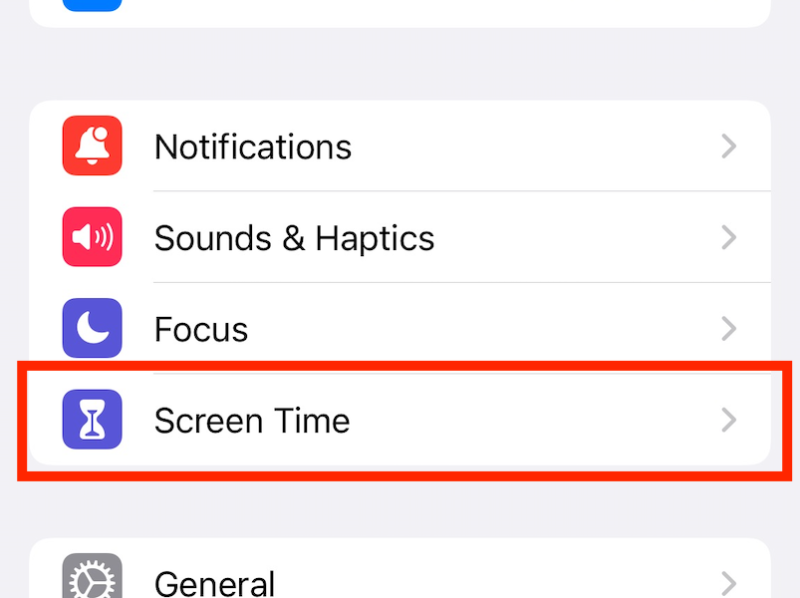
- Go to “Content & Privacy Restrictions”
Now tap on “content and privacy restrictions” and enter your screen time passcode if prompted.
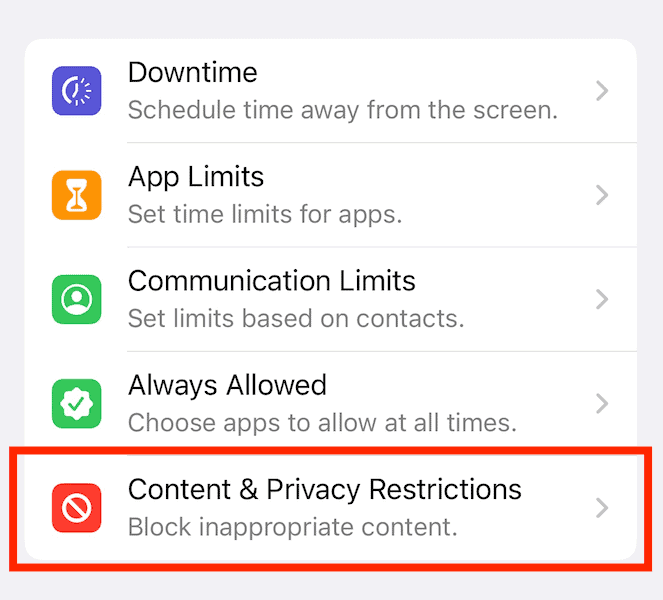
- Go to “Content Restrictions”
Tap on “content restrictions.”

- Go to “Screen Recording”
Tap on “screen recording.”
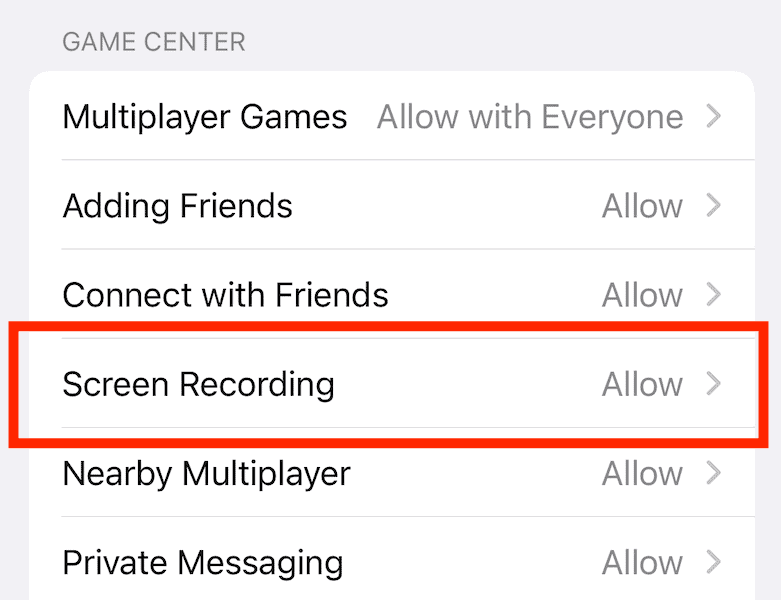
- Disallow the Screen Recording Setting
Tap on “don’t allow.” Your child won’t be able to record your screen now.
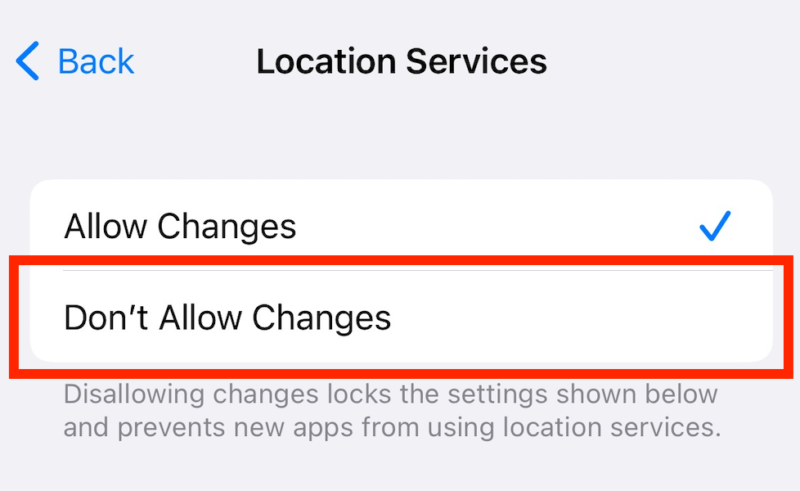
You need to be just as careful with your device’s general unlock code. If you share a device or use an unlock code to control your child’s access to a device, never give out the code. For iPhones with Touch ID, if your child knows how to unlock the device, they can go into the settings and add a new fingerprint. By doing that, they can easily unlock the device whenever they want.
Some tech-savvy kids might try to manipulate “family sharing” group settings by creating a new Apple ID and attempting to join it to the family group with different permissions. Ensure you monitor family sharing requests carefully and maintain control over the family organizer account.
If you’re managing multiple devices through the family sharing settings, ensure all connected accounts have proper restrictions enabled to prevent circumvention through other family members’ devices.
2. Use a Screen Time Remover App Like AnyUnlock
If your child is determined to remove the restrictions on their device, they might try an unlocking app such as AnyUnlock.
All they have to do is install the software on a computer, connect their device to the computer with a USB cable and use the software to unlock the screen time passcode — a simple task for any tech-savvy kid. Once they’ve done that, they can access the settings menu and remove any restrictions.

AnyUnlock has a free version, but it’s limited and doesn’t include the feature for unlocking a screen time password. That’s only included with a premium plan, which starts at $45.99 for three months. It’s highly likely that your child won’t be able to pay for such an app, but there’s still a chance they might find a different free app to unblock their device.
To stop this from happening, check for unlocking apps on any device that your child has access to. Beyond desktop applications like AnyUnlock, there are also web-based tools that claim to bypass screen time restrictions by exploiting iOS vulnerabilities.
Keep your child’s device updated to the latest iOS version to protect against these exploits, and regularly check their browsing history for such tools. It could be a mobile app that is installed on their device, or it could be a software that they’ve downloaded to their computer. If you find anything, uninstall it and speak with your child.
3. Change Date and Time
With the downtime and app limit settings in screen time, you can regulate how much time your child spends on their device, limit access to certain apps and even set a schedule. However, while the device is in uptime, your child can change the device’s time zone, delaying when downtime kicks in.
You can stop your child from doing this by going to the location services settings and tapping “don’t allow changes.” Here’s how to do that:
- Go to “Screen Time”
Go to “settings” and tap on “screen time.”

- Go to “Content & Privacy Restrictions”
Tap on “content and privacy restrictions.” Enter your password if needed.

- Go to “Location Services”
Tap “location services.”

- Go to “System Services”
Tap on “system services.”
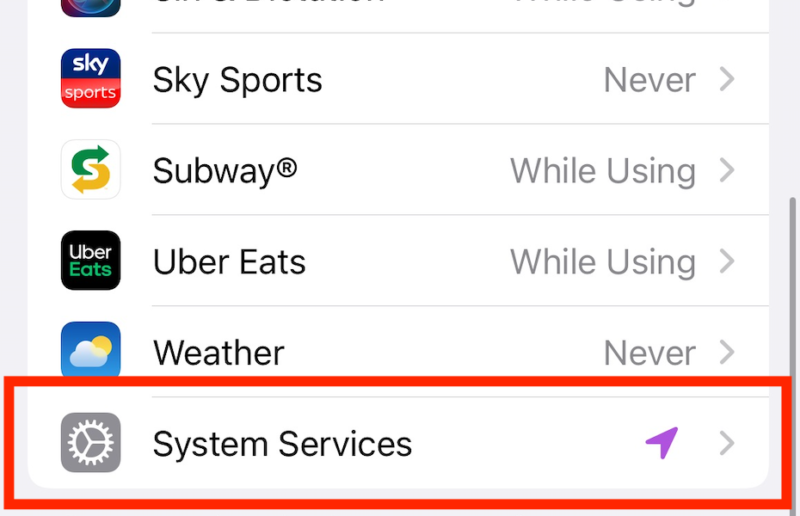
- Ensure the Setting for Changing the Time Zone Is Off
Make sure “setting time zone” is toggled off. Now tap “back.”
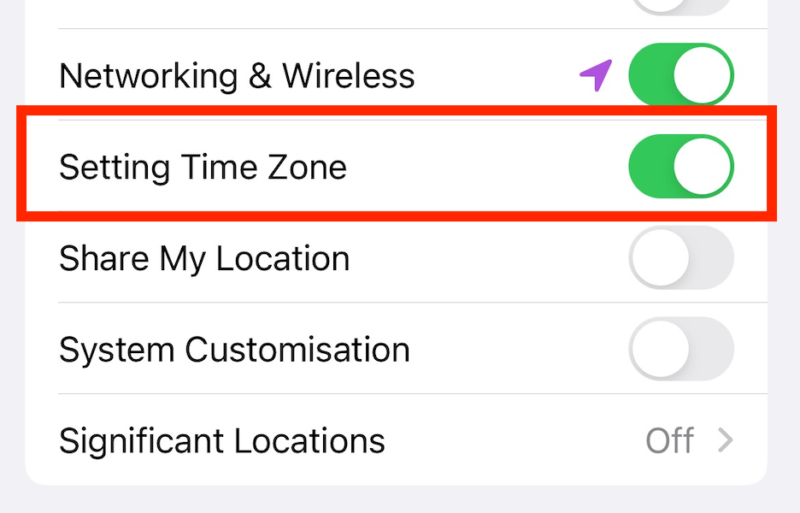
- Disallow Changes to the Location Services Settings
At the top of the location services screen, check “don’t allow changes.” Everything should now be grayed out except for “system services.” If you tap that, “setting time zone” should be grayed out. The setting for “date & time” should also be grayed out in the general settings.

4. Delete and Reinstall Restricted Apps
Some kids have found a loophole where they can simply delete and reinstall an app to wipe its screen time restrictions. This won’t matter if you’ve set a downtime schedule for the device as a whole, but it’s a clever workaround for restrictions set on specific apps. Once the app is reinstalled, your child can use it whenever they like.
Thankfully, it’s pretty simple to stop this. You can block your child from deleting or installing apps in the settings. Here’s how to do that:
- Go to “Content & Privacy Restrictions”
Tap on “content and privacy restrictions” and input your screen time passcode if you need to.

- Go to “iTunes & App Store Purchases”
Tap on “iTunes and app store purchases.”
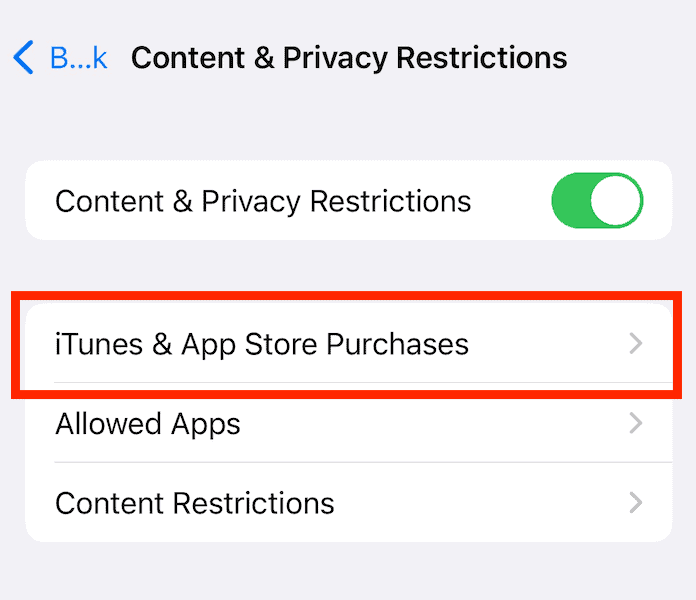
- Disallow Installing Apps, Deleting Apps and In-App Purchases
Tap on “installing apps,” “deleting apps” and “in-app purchases” and select “don’t allow” for each option.

Another method children might use is restoring their device from an old iCloud backup made before restrictions were enabled. To prevent this, ensure you maintain control over your child’s iCloud account and regularly update the backup after setting restrictions.
5. Send Messages Through Siri or Contacts
If your child is constantly messaging friends, you can imagine how they feel when downtime kicks in, or they reach a set limit on the messaging app. There are a few ways your child can circumvent screen time restrictions to continue using the iMessage app. We’ll go over each one here and tell you how to stop it.
Stop Access to iMessage Through Siri
Your child can ask Siri to send a message even when iMessage is blocked by screen time restrictions. Siri will happily oblige and ask you who you want to send the message to.

You can stop this workaround by turning “Siri and dictation” off in the settings. Here’s how:
- Go to “Screen Time”
Tap on “settings” and then tap “screen time.”

- Tap “Content & Privacy Restrictions”
Tap on “content and privacy restrictions” and enter your PIN if needed.

- Go to “Allowed Apps”
Tap on “allowed apps.”
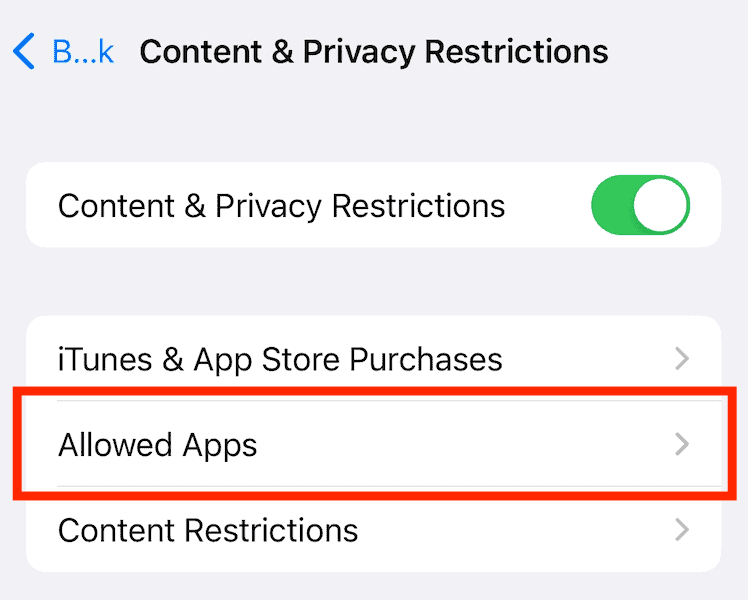
- Turn Off Siri & Dictation
Toggle the “Siri and dictation” setting off.
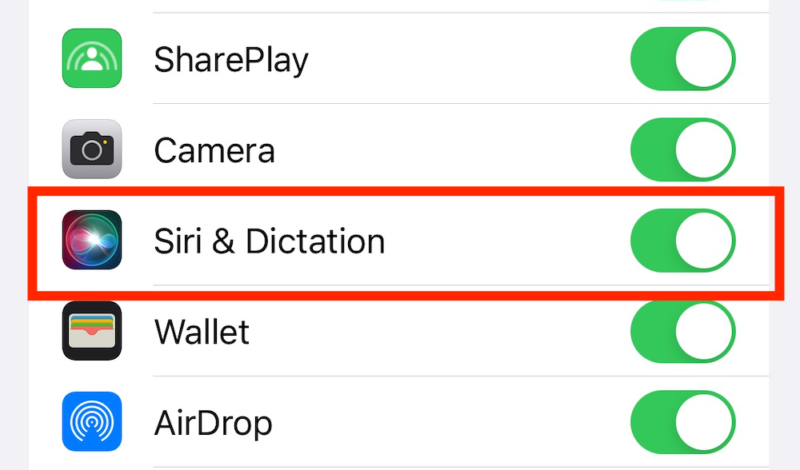
Stop Access to iMessage Through the Contacts App
Children can access iMessage during downtime by taking a shortcut through the contacts app. If they share a contact via text, the iMessage app opens. You can stop this by setting a time limit on the contacts app itself.
- Go to “Screen Time” Settings
Go to the settings app and tap on “screen time.”

- Go to “App Limits”
Tap on “app limits.”

- Tap on “Add Limit”
Tap “add limit” to set up a new app limit.
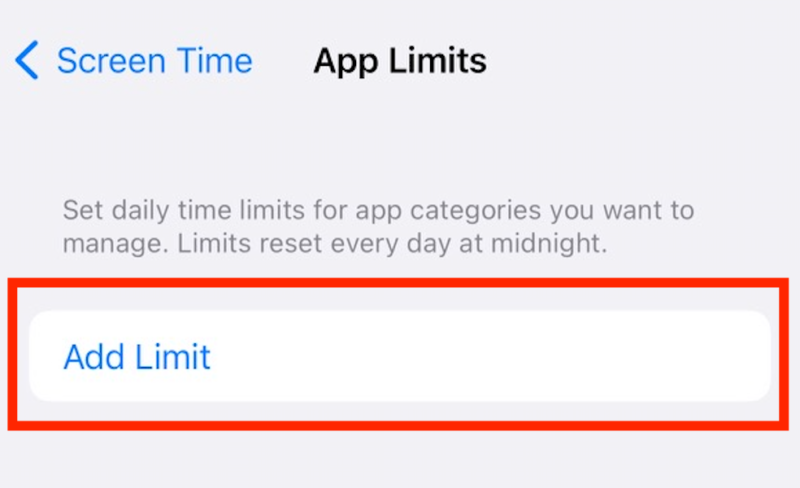
- Select the “Contacts” App
Select the “contacts” app and tap “next.”

- Set the Time to the Lowest Setting
Set it to one minute — the lowest time possible. The app should be grayed out after one minute.

Similar to iMessage, children can also make FaceTime calls during downtime by using the contacts app or Siri. You can prevent this by adding FaceTime to the list of restricted apps and removing it from the “always allowed” list. Kids might also try to bypass messaging restrictions using AirDrop to share content with nearby devices. Turn off AirDrop in the network settings on your phone to prevent this.
Stop Access to iMessage via Screenshot
Even with downtime or app restrictions, your child can access iMessage by taking a screenshot and selecting “send.” Once they do that, iMessage pops up.
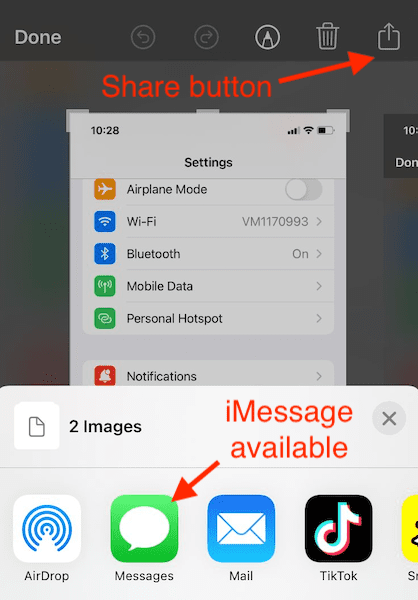
The best thing you can do is remove iMessage from the “always allowed” list. Removing it from this list will mean your child cannot access iMessage once they reach app limits or downtime. Here’s how to do that:
- Go to “Screen Time”
Go to “settings” and tap on “screen time.”

- Go to “Always Allowed”
Tap “always allowed.”
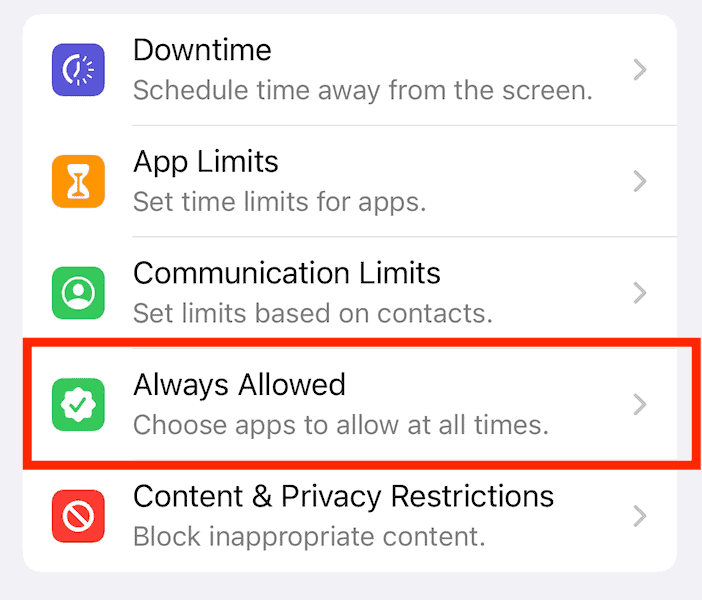
- Disallow the iMessage App
Tap the minus icon next to iMessage to remove it from the “always allowed” list.
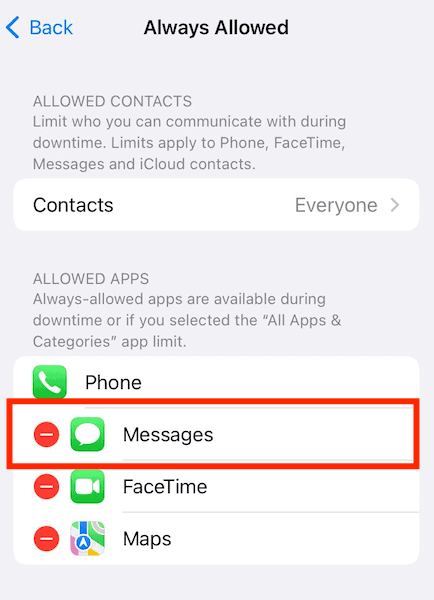
Stop Access to iMessage From the Notifications Panel
If your child has a message left in their notification panel after downtime or app limits kick in, they can simply swipe down and tap the notification to open it again.
Unfortunately, there’s no real fix for this other than removing iMessage from the “always allowed” list like in the section above. You can also check your child’s device personally to ensure there are no iMessage notifications left once downtime kicks in. Any messages received during downtime won’t be visible until the device can be used again.
6. Watch YouTube Through iMessage
You may have blocked the YouTube app, but your child can still watch YouTube videos if they receive a link on iMessage. Once they click on the link, the YouTube video loads on iMessage. You can prevent this by blocking the YouTube website.
- Go to “Screen Time”
Go to “settings” and tap “screen time.”

- Go to “Content & Privacy Restrictions”
Tap on “content and privacy restrictions.”

- Go to “Content Restrictions”
Tap on “content restrictions.”

- Go to “Web Content”
Tap on “web content.”
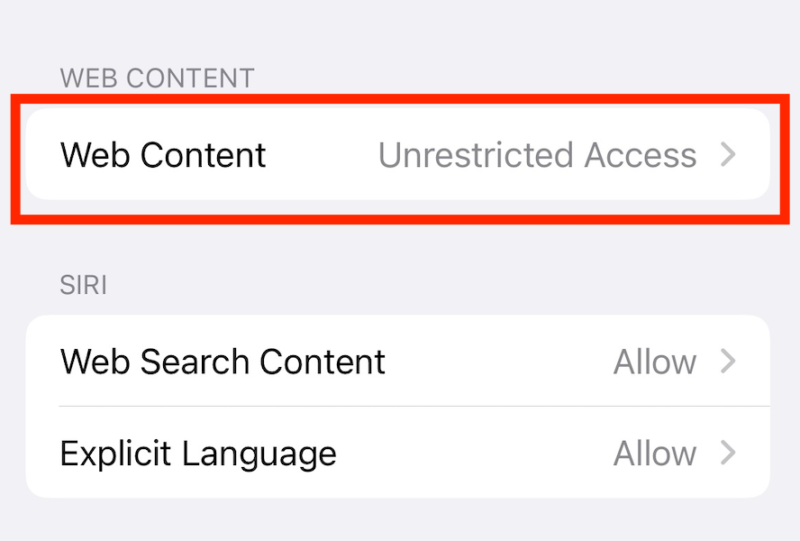
- Select “Limit Adult Websites”
Tap “limit adult websites” to select it. Then, under “never allow,” tap “add website.”
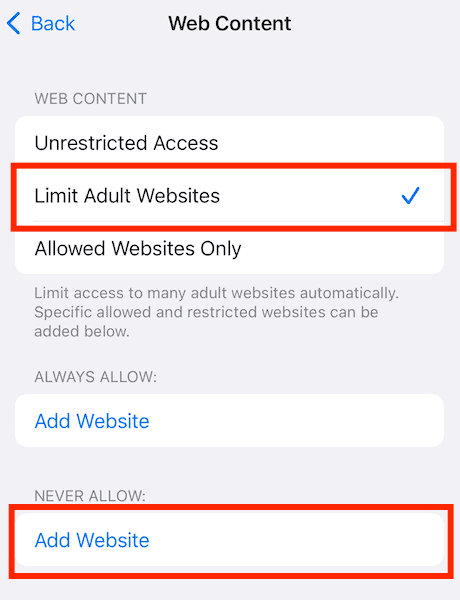
- Add the YouTube URL
Type the following YouTube URL into the URL box: https://www.youtube.com. It has to be exact or it won’t work.
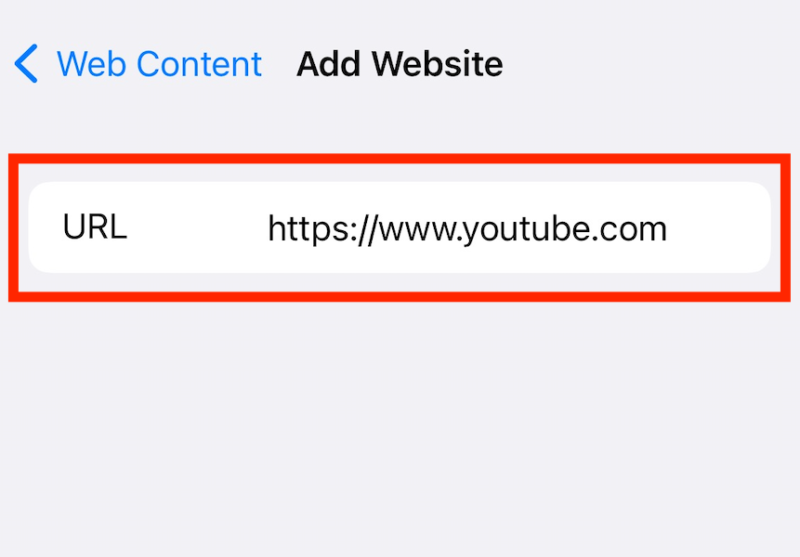
It’s also possible to watch YouTube videos through the iMessage widget. There’s no way to stop this other than to remove iMessage from the “always allowed” list, just like we’ve shown in the “stop access to iMessage via screenshot” section.

Final Thoughts
We hope this guide has opened your eyes to what your kids might still be up to after downtime starts. Although Apple’s screen time feature is super handy, there are a couple of loose ends Apple needs to fix. Thankfully, you can take a few more steps to ensure your children remain safe online and stay within the limits that you’ve set.
If you want something more bulletproof, with additional features and options, you might be better off with a third-party parental control app. Take a look at our list of the best parental control apps for iPhone and iPad.
What do you think of Apple screen time? Do you know of another way your child can bypass the restrictions? Do you think Apple should invest more time into perfecting screen time? Let us know in the comment section and, as always, thank you for reading.
FAQ: How to Remove Screen Time Restrictions
Yes, there are a few ways you can bypass screen time on iPhone. Thankfully, though, parents or guardians can take countermeasures to further secure Apple devices.
Kids can use an app like AnyUnlock to unlock the screen time without needing a password.
If you don’t know the screen time passcode, the only way you can turn off screen time limits is by using an app such as AnyUnlock.

